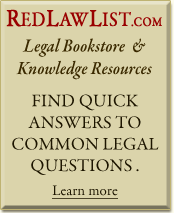10 Must-Have Items in Your Lease or Rental Contract
A lease or rental agreement is a legal contract that sets the rules landlords and tenants must follow in their rental relationship. It can be as short as one page or much longer - as long as it details the agreed-upon terms of the rental or lease.
Here are ten things that should be covered in any agreement:
1. Name All Tenants
Each adult who will be living in the rental unit should be named and sign the rental or lease agreement. This includes both members of a couple, married or unmarried. Why? This will make each tenant legally responsible for all of the terms of the agreement. Any leasing disputes are made much clearer when all parties are named and legally bound to the agreement.
2. Occupancy
Terms need to state clearly that the unit is the residence of the tenants who have signed the agreement and their minor children. This guarantees the property owner's right to determine who lives at the property and to limit the number of occupants. The property owner has the right to terminate a lease agreement if the tenants are found to be in violation by subletting or allowing someone not on the agreement to move in without permission.
3. Tenancy Terms
Rental documents should state whether the agreement is for a rental or fixed-term lease. While the terminology can differ a bit from state-to-state, it's generally true that rental terms are self-renewing month-to-month agreements while leases typically last a year.
4. Rent Amount
Your agreement should state the amount due, when it is due, how it's to be paid (by mail, for example), and using what method (i.e., a personal check). This helps avoid confusion and prevent disputes between tenants and property owners. Specifics regarding late fees, grace periods and bounced check charges should also be included.
5. Fees and/or Deposits
Many leasing disputes center around security deposits. To avoid confusion – or the need to hire a real estate attorney – the agreement terms surrounding deposits should be clear. The dollar amount of a deposit should be stated. The agreement should specify how the deposit may or may not be used. It should cover how the deposit will be returned, list any deductions that would be taken from the deposit after the tenant vacates the property, and note if any portion of it is non-returnable.
6. Maintenance and Repairs
A rental agreement must include information on maintenance and repairs that clearly states the responsibilities for each party. This includes basic expectations for the tenant in regards to cleanliness and sanitation and restrictions on tenant alterations or repairs. It should also detail the property owner's requirements for the tenant alerting them to maintenance or repair issues as well as how those complaints or requests will be handled.
7. Entry to Property
This term states how much advance notice the property owner will provide before entering the property. It should make clear the legal rights of the tenant and the property owner in this regard.
8. Illegal Activity
An explicit clause prohibiting disruptive and/or illegal behavior is essential to a lease agreement. This helps all parties involved in the lease agreement should an issue arise.
9. Allowance of Pets
A rental agreement should be clear on the allowance of pets. If pets are allowed, any special restrictions must be noted - this includes number of pets, size or type of pets allowed, and requirements regarding animal waste disposal.
10. Any Other Restrictions
Be sure that any agreement complies with all applicable laws including safety codes and occupancy rules. State laws differ and should be reflected in the agreement terms. Any other specific restrictions, like the use of common areas or parking regulations, should be detailed as well.

